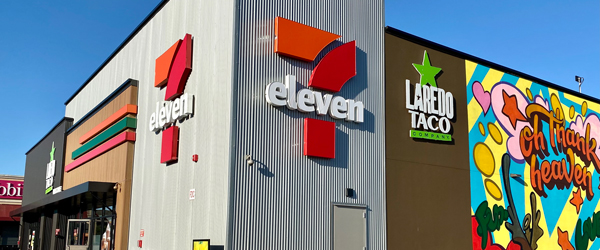Lines Between C-Stores and QSRs Blur

ALEXANDRIA, Va.—Convenience stores could be taking market share from quick-serve restaurants (QSR), reports Forbes. Food sales at c-stores have increased to over 20%, according to new research from Cardlytics, and the industry’s share of food sales has increased from 18.42% to 21.39% since 2019.
Cardlytics says c-stores have the advantage for foodservice options due to quicker prep time, more variety and short wait times. The average wait at a QSR is about seven minutes, but it’s only four minutes on average to get your food at a convenience store.
According to NACS State of the Industry data, foodservice accounted for 22.5% of in-store sales in 2021—significantly higher than the 16.8% reported a decade ago. Foodservice now makes up 35.5% of in-store gross profits, compared to 29.2% in 2011. Also, a robust foodservice offer was the greatest predictor of in-store profit; stores in the top decile for in-store store operating profit have foodservice gross profits that were seven times those in the bottom decile.
“At least some of those gains seem to be coming from the QSR category, intensifying an already competitive space,” suggests Forbes.
Forbes writes that the convenience factor is an influencing reason on the industry’s increased market share in food sales. “As c-stores upgrade their foodservice offerings to be on par with QSRs, consumers may be more likely to choose the option that is most convenient for them,” writes Forbes. “Speed is one factor, but so is location (consider that 7-Eleven footprint) and additional offerings, like gas or beer. For the latter, the scale will always tip in c-stores’ favor.”
According to research by Bluedot, almost 60% of consumers believe that convenience stores are on par with QSRs. Seventy percent of consumers go into the convenience stores before or after buying gas, and over half of customers buys snacks, while 20% buy grocery items and 16% get alcoholic beverages.
The lines between c-stores and QSRs have been blurring for years, says Forbes, and in some instances, the line does not exist. Forbes points to Sheetz, Wawa and 7-Eleven, which offer drive-thru and pickup, and they are far from the only convenience stores that offer these services.
7-Eleven has been opening its Evolution stores with outdoor patios to accompany its foodservice offerings, including its Laredo Taco Company concept. The stores also offer self-serve espresso machines, as well as delivery services from Grubhub, DoorDash and the like, “further penetrating into QSR territory.” (NACS’ Ideas 2 Go video series visited 7-Eleven’s Evolution Store in Dallas. See why customers who visit an Evolution store quickly recognize the food- and beverage-forward experience 7-Eleven is cultivating.)
Of course, 7-Eleven is one of many convenience stores revolutionizing the foodservice game. Check out more in the NACS Ideas 2 Go video series. In “Think Like a Restauranteur” in the October issue of NACS Magazine, convenience store foodservice pros share their views on what makes for a successful foodservice business. Also not to miss, “Competing With QSRs” in the May issue.
For those new to convenience foodservice, check out the NACS Certified Convenience Foodservice Management Online Training Series powered by NACS eTraining partner Ready Training Online. Retail operators can now earn a Certified Convenience Foodservice Management (CCFM) designation by completing a 10-course online training series which tackles the key aspects of developing and growing a successful foodservice offer.





